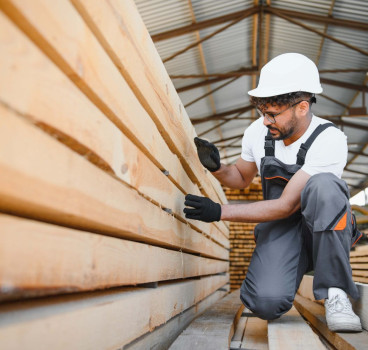Compare Eco Housing Design Types
Private homes are estimated to be responsible for about one fifth to one fourth of global carbon dioxide emissions; and for that reason, eco-friendly construction or green building is becoming more and more of a necessity. If you're looking to move home and are wanting something more eco-friendly, Roof Stores have been investigating some alternative types of housing that will help you cut down your carbon footprint…
Earthship
Earthship designs are made completely from natural and upcycled materials. They are built with the intention of being “Off-The-Grid ready”. This means the require minimal reliance on public utilities and fossil fuels. They are also constructed to use available natural resources in particular energy from the sun and rain water
Sub-Types
Packaged: Prefabricated construction packages available making it easier to construct. Most economical and versatile.
Modular: Provides more sculptural and variety of rooms. Every room has thermal mass and stability.
Eco-Friendly Elements
- Constructed using natural and upcycled materials.
- Thermo-solar heating and cooling.
- Solar and wind electricity.
- Self-contained sewage treatment.
- Water harvesting and long-term storage.
Advantages
- Grow food inside thanks to greenhouse interaction zones.
- Thermal mass keeps you cool in summer and warm in winter.
- Ease of construction.
- Can be constructed using materials that are free and would otherwise be landfill.
- Inexpensive. Models start at $20,000.
- Little to no utility bills.
Disadvantages
- While materials are free, they take time to collect.
- Most Earthships are constructed with the aid of concrete, which contributes 10% of the world's greenhouse gases.
- If not done by yourself, it can be costly to construct.
- Can take 2-3 years to find its median temperature.
Environment Rating
- 4/5
Practicality Rating
- 2/5
Cost To Build
$225 per square foot.Or, from as little as $10,000.
Earth Sheltered
Earth Sheltered Houses are typically built into the side or underneath the ground. This could be through ‘Earth Berming' where earth is piled up against exterior walls and packed, sloping away from the house. Or, they could be classed as ‘in-Hill Construction' where the home is set into a slope or hillside. There is usually only one wall visible, the rest are surrounded by earth. Some houses are completely underground, otherwise known as Fully Recessed Construction. This is where the ground is excavated, and the house is set in below grade.
Eco-Friendly Elements
Thermal mass: Generated by the earth surrounding the building, warming the house in winter and cooling it in summer.
Advantages
- Lower Bills: Energy usage will be minimal from heating.
- Storm Resistant: Thanks to being mostly underground, the impact on your home from high-winds will be minimal or non-existent.
- Thermal Mass: Energy Usage can be slashed by up to 50%-80%
Disadvantages
- If the earth shelter has not been properly designed, you will find the following;
- Water Seepage
- Internal Condensation
- Bad Acoustics
- Poor Indoor Air Quality
- Due to the threat of water seepage, non-biodegradable substances, like concrete and plastics, tend to be used, which isn't eco-friendly
- Lack of natural light.
Environment Rating
- 4/5
Practicality Rating
- 1/5
Cost
$100-$120 per square foot
Prefabricated
Pre-fabricated designs are houses that are constructed off-site. Once complete they are shipped to your chosen location and even assembled for you.
Sub-Types
Manufactured: Built on nonremovable steel frames, known as chasses, which are used to transport the home and for permanent support and are relatively low cost.
Modular: Consist of units or modules that are constructed in factories and joined together on site.
They often use costlier materials and are bigger than manufactured homes. They also tend to have more customisation options
Panellised: Have separate units joined together on-site and are more structured then Modular.
The panels fit together in a unique order, rather than the random method of modular.
Eco-Friendly Elements
- Green Construction: Prefabricated houses use less energy during construction.
- Green Materials:Typically built with environmentally friendly and recyclable materials like wood and steel.
- Wastage: There's less wastage during construction.
Advantages
- Air-Tight: Tight seams and state-of-the-art windows keep heat in and thus reduce energy bills. Also have a reputation to withstand natural disasters.
- Speed Of Assembly: Thanks to being pre-made assembly is very quick, as walls and ceilings just need to be joined together.
- Affordability: Cheaper than standard stick-built homes.
Disadvantages
- Increased up-front costs due to pre-construction and assembly before you can move in.
- Hooking up utilities can be problematic.
- Transportation can be difficult depending on where you want to live.
- Buying the land to put your home on can be very expensive.
Environment Rating
3/5
Practicality Rating
5/5
Cost
Can range from $50,000 - $500,000.
Shipping Container
Homes made out of shipping containers! They have grown in popularity over the past several years due to their inherent strength, wide availability, and relatively low expense.
Eco-Friendly Elements
- Reusing Steel: For each recycled shipping container 7,000 pounds of steel become reused.
- Less Concrete & Cement: The only concrete that you will need will be for the foundations.
Advantages
- Low Cost: Containers and much cheaper than materials such as brick and steel.
- Quick Construction: Due to the walls, floors and ceilings being already constructed, moving in time is radically decreased.
- Durable: Containers are already made to resist extreme weather conditions.
- Off Site Construction: Containers can be converted off-site so only assembly and interior design in needed on-site.
Disadvantages
- Temperature Control: Temperature control can be difficult due to the metal's absorption quality.
- Space & Shape: You are restricted to the length and width of the containers.
- Cargo Spillages: You never know what the container was storing before you owned it.
- Solvents: Solvents released from paint and sealants used in manufacture might be harmful.
Environment Rating
- 2/5
Practicality Rating
- 3/5
Cost
$2,000 per container.
Tiny House Movement
Tiny houses have become so popular that they have their own ‘movement'. Generally, they are under 500 square feet.
Eco-Friendly Elements
- Less building materials required.
- Easier to build with recycled, repurposed and salvaged materials.
- Reduced life cycle cost of materials.
- Smaller space to heat.
- Can be mostly powered off solar and wind resources due to size.
- Composting toilet.
- Catch and filtration of rainwater.
Advantages
- Many tiny houses can be built with wheels enabling it to be a mobile home.
- Affordability.
Disadvantages
- Less living and storage space.
- Limited entertaining space.
- Minimalist lifestyle.
Environment Rating
4/5
Practicality Rating
3/5
Cost
$19,000 - $50,000
Additional Blogs

What if Building Control went fully digital?
Building control governs structural integrity, fire protection, energy efficiency, accessibility and countless other aspects of design and construction. Historically, this process has been highly...
Read moreWhere most “Smart Buildings” go wrong
Smart buildings are often presented as the ultimate in modern construction - interconnected, efficient, intuitive and driven by real-time data. They promise lower operating costs, reduced energy use,...
Read more

The future of facilities management starts at RIBA Stage 0
Facilities management has traditionally been treated as a discipline that only becomes relevant once a building is handed over. At that point, FM professionals inherit decisions made months or years...
Read more